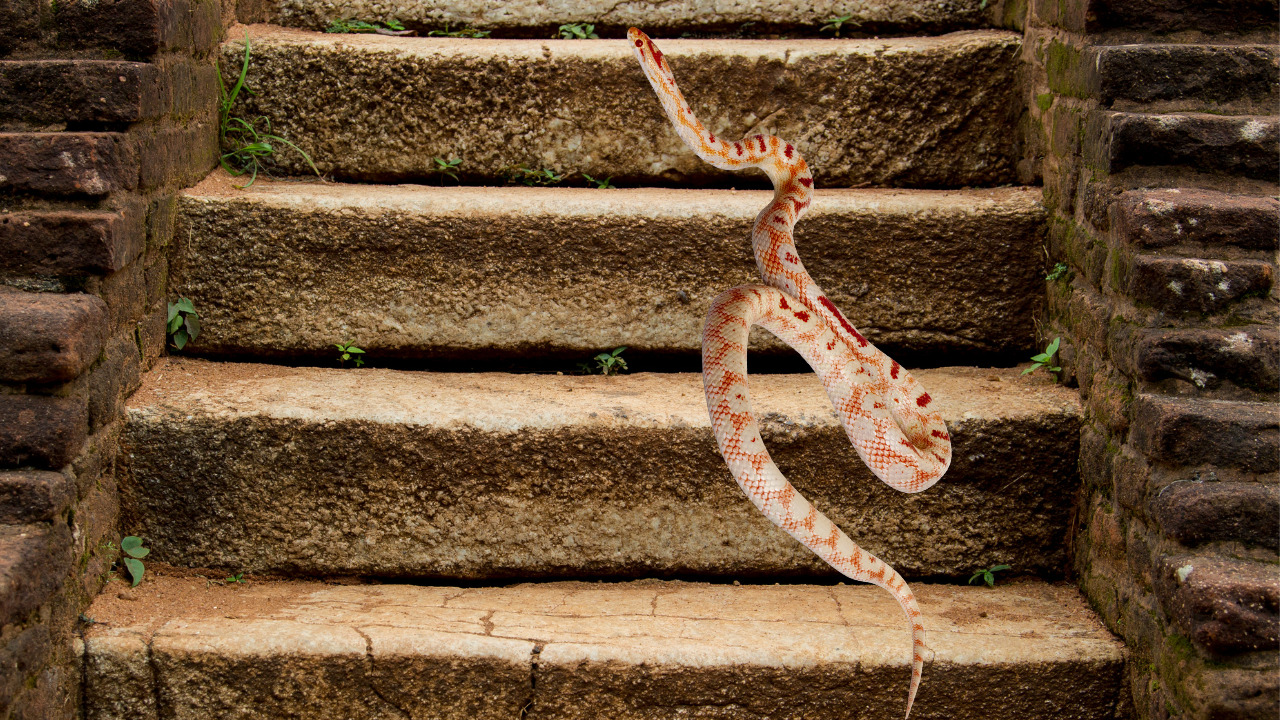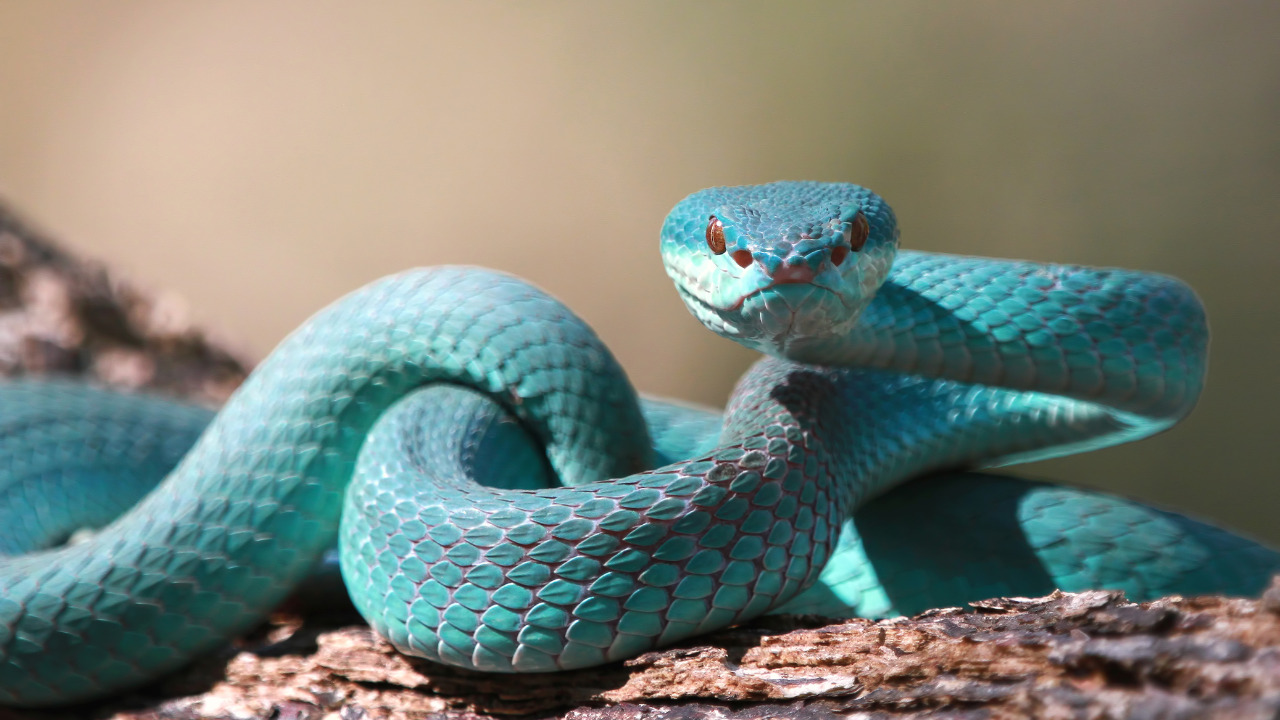Snakes can move their body in a variety of ways. Depending on their size, most snakes can ascend a staircase, the snake, and the stairway. Snakes are quick and nimble. Are Snakes Capable of Climbing Stairs? Snakes can climb staircases.
When a snake climbs steps, the front part of its body is lifted from one step to the next. The lowest two-thirds of a snake’s body serves as a basis. They’ll pull the rest of their bodies up the stairs once the front of their bodies is up.
Snakes with longer bodies, such as Pythons, may climb multiple steps simultaneously. They extend the front section of their bodies forward; this is how they can clear so many steps in such a short amount of time that you wouldn’t even see them climbing the stairs.
Table of Contents
Snakes Are Experts To Climb The Stairs
Many people mistakenly believe these serpents cannot enter a structure if they dwell on the second or third story.
Snakes are quick-moving reptiles that can adapt to various surroundings thanks to their well-developed bodies that allow them to climb stairs, walls, and other surfaces. Most people are terrified of snakes because they can rapidly ascend staircases.
Snakes, especially those that eat rodents like the red rat snake, are excellent climbers who can scale walls and staircases.
Most people believe that all snakes are dangerous to humans. Some snakes may struggle with stairs, but if they are determined, they will succeed. The snake lifts the upper part of its body and uses the rest as leverage to climb the stairwell.
The rest of the body will be pulled after the top section is on the first step. The method is carried out again and again until the desired result is achieved. However, a little snake will go through this procedure. Large snakes, such as the rock python and the king cobra, will crawl over a set of stairs, making it much easier for them to climb.
Snakes Cannot Move On Flat Stair Surface Easily
Snakes are unlikely to ascend to the upper floors of your home if the stairs are smooth. Smooth surfaces lack the friction necessary for a snake to move. Snakes often use muscle contraction and expansion to climb. To pull and push the remainder of its body up, the serpent’s upper body has to have a firm grip on the ground.
If there is no friction between it and the ground, it cannot move forward and will instead crawl aimlessly until it comes across a rough surface.
Each Snake Has Unique Climbing Abilities
Before we get into the physics of how snakes climb stairs, it’s important to note that there are hundreds of snake species on the globe. With that in mind, it’s understandable that these serpents have special skills. Snakes come in a variety of sizes and agility levels.
The ventral scales, specific rectangular areas on a snake’s underbelly, are the key to its flexibility. These scales correlate to the serpent’s ribs and work together to drive it forward with considerable force.
The concertina movement is one of the most common snake movements, and it is utilized by snakes to ascend stairwells and other vertical surfaces. This action is effective when a snake spreads the front section of its body along with a vertical surface in search of a location to hold its ventral scales.
It employs tight curves to attach to the surface and bunches up the middle of its body to produce traction, pulling its back ends with it.
Can Snakes Move On The Walls?
Snakes have their own set of challenges when it comes to climbing walls. Most lizards and insects adhere to walls, but snakes do not. Climbing is a specialty of snakes that feed rodents. Most snakes can easily scale walls with gaps and surfaces to grip.
Because they are rough and have spaces between the mortar and the soffit of the brick or block, snakes can easily climb them. A snake will only climb a wall to access food; they do not climb walls for climbing.
All Species Of Snakes Cannot Climb.
Remember that not all snakes can scale vertical planes before you go out and buy everything you’ll need to snake-proof your home—many of whom are non-venomous to humans and pursue prey or hunt for a haven.
Thin and long snakes are better at climbing because their bodies must fit into the grooves and crevices of a rough wall to propel them higher.
Specific python and constrictors breeds are too large to accomplish this. Certain outliers, such as the bull snake, can climb walls and are one of the strongest serpents. A bull snake can make its way up to the roof in pursuit of a bird’s nest or exterminate a family of rodents in one sitting.
In Which Cases Snakes Climb Walls?
Snakes are carnivores who eat a range of food, including rats and other pests that squat in your home. As a result, snakes slither along walls to hunt, utilizing their tongues to smell their surroundings and take up aromas. A snake may also crawl to higher places to escape predators or the cold.
Many serpents climb trees in the wild for food and shelter. Brown and green slithery snakes can hide amid the leaves and branches of trees, undetectable to predators.
Because snakes are ectothermic, their body temperature fluctuates with their surroundings, so they may seek warmth when it’s chilly. Snakes’ muscles are adversely affected by cold to the extent that their senses are hampered, and they cannot hunt effectively.
A snake moves in two directions—the climbing snake grips groves or crevices on a surface by angling its scales. The monster then slowly creeps ahead using another section of its body.
Frequently Asked Questions
Can Snakes Spring Off The Surface Entirely?
It’s simple to picture snakes being able to perform any gymnastics if snakes terrify you. Fortunately, they can’t completely spring off the ground because they have no limbs. However, a snake can lunge quickly forward while coiling up.
Even if the roughness of the surface permits, a snake is unlikely to charge at you explosively, especially when mounting stairs.
What Are The Hidden Spots For Snakes In Homes?
Snakes can conceal themselves within a house in rooms with little human activity. This can include the area under your refrigerator, bed, or oven. A cupboard is another place where the serpent might coil up and emerge only to eat. Snakes can create long-lasting nests in the crawl area, basement, or garage, even in homes with reliable food sources.
Conclusion
Snakes, especially large or deadly snakes, should not be threatened or scared. A snake will fight back if it feels threatened. A trip to the hospital may be necessary as a result of this. Snakes are capable of climbing both stairs and walls. Doing so isn’t difficult for them. It’s in their nature and instinct.
Snakes frequently enter attics via stairs, especially where they are more common. The stench of rats frequently attracts these snakes. Ensure your attic is tidy, well-organized, and free of rodent infestations. This will guarantee that a snake won’t be enticed to investigate your inside.
Snakes have spent decades climbing in the wild to ensure their basic needs are supplied. Unfortunately, snakes are misunderstood; most don’t wish to harm humans. Food and warmth are their primary concerns. If you find a snake in your house, it’s likely looking for food, warmth, or both.










